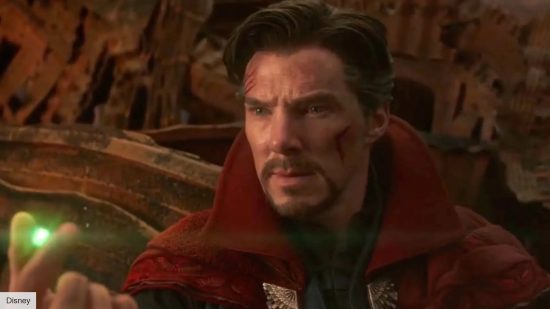When it comes to heroes in the MCU, the debate over the strongest Avenger is a difficult one to settle. Many MCU characters have impressive abilities that put them in the running for the title, but one who often gets overlooked is Doctor Strange. The Sorcerer Supreme may have been rather tame in the comic books, but the Marvel movies are changing that.
Stephen Strange, an incredibly skilled surgeon, is forced to re-evaluate his whole life when a car accident leaves him unable to operate. After a spiritual awakening at Kamar-Taj, home of the Masters of the Mystic Arts, Strange can harness the power of magic and takes possession of the time stone. Able to manipulate reality and traverse different dimensions, Strange becomes one of Earth’s mightiest heroes.
Thanks to a new release from The Folio Society, we were able to take a deep dive into the history of Doctor Strange through a collection of his most important comic book appearances and see the journey this character has taken from a sideshow magician to a fully-fledged defender against some of the best Marvel villains.
Doctor Strange, as a character, is approaching 60 years old, having made his first appearance on the page in Strange Tales #110 of July 1963. It wasn’t until December of that year, though, with Strange Tales #115, that we would learn more about the hero with ‘The Origin of Doctor Strange’.
You would be forgiven for thinking that, with a title like Strange Tales, these comic books were devoted entirely to the adventures of Stephen Strange. In fact, issue #115 focused more on the Human Torch taking on Spider-Man villain Sandman. Doctor Strange had to settle for a five-page cameo, described as a “throwaway story” by Roy Thomas, the man responsible for collating this definitive collection of Doctor Strange stories.
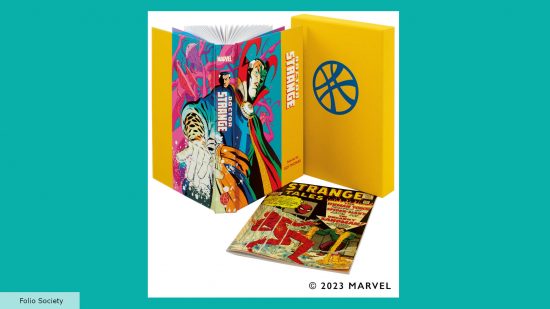
Thomas begins his book musing over the great surge in popularity of Doctor Strange thanks to the rise of the superhero movie. “Strange as it may seem – and hard as it may be to believe today, with two cinematic blockbusters now under his sash and key roles in several other super-hit films as well – back in the 1960s and for decades afterward, Doctor Strange was one of Marvel’s less important, and least popular, marquee-level heroes.”
Indeed, for the first few years of his paper-based life, Doctor Strange was tasked with “filling space” behind more exciting and sought-after stories. However, one thing that cannot be questioned is the fact that both Stan Lee’s writing and Steve Ditko’s artwork were always of the highest quality, with Thomas describing their efforts on Doctor Strange as “nothing short of spectacular.”
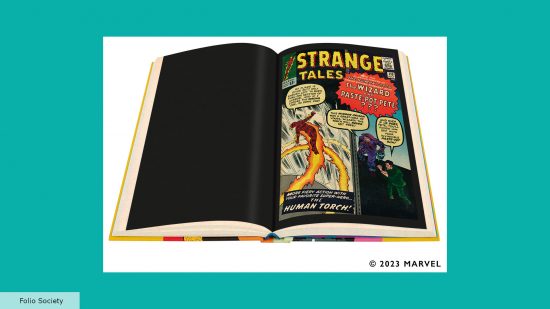
I will be the first to admit that Doctor Strange has never been a comic book character I have rushed out to read, but my brief knowledge of his history within the colourful pages of Marvel comics has let me down. That’s something I am putting right with the Doctor Strange collection from the Folio Society, and it’s fascinating to see how the MCU movie version of this character owes so much to those early comic book strips.
I’m not the only one, though, as Thomas reveals he too was “for some time immune to the series’ charms.” Perhaps, like Thomas, many of us are simply averse to magic-based heroes. We find these heroes’ capabilities too convenient, and not quite exciting enough to capture the imagination like Thor’s mighty hammer or Wolverine’s adamantium claws.
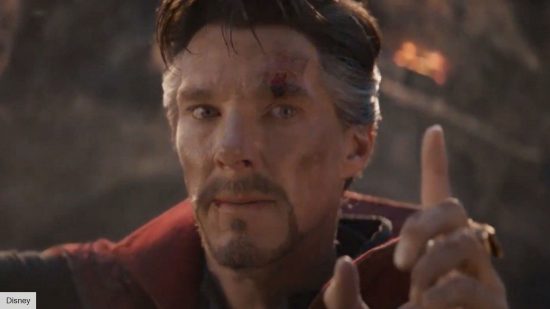
Doctor Strange didn’t get his own solo comic book issue until 1968, but not long after a downturn in comic sales would leave the Sorcerer Supreme temporarily shelved by Marvel. A revival of the character’s adventures in 1972 didn’t amount to much either, and it wasn’t until 1974 that Strange would finally become a sales hit for the first time with the Sise-Neg Genesis arc in Marvel Premiere #14.
Nowadays, we know Doctor Strange as one of the more dry and sardonic MCU characters, as likely to crack a joke as he is to cause a multiversal incursion. That more humorous side to the hero didn’t cross anyone’s mind until Thomas worked on Doctor Strange, Sorcerer Supreme #5 of July 1989, and the writer realised there may be “more of a sense of humour buried deep inside” Stephen Strange.
Of course, casting someone like Benedict Cumberbatch in the role will always bring a degree of charm and wit to balance out a character who is fundamentally engineered to be abrasive, self-righteous, and bitter. It’s not an easy combination to manage in a character, but by and large, the MCU has succeeded, especially when we get to see Strange interacting with other heroes in an ensemble piece.
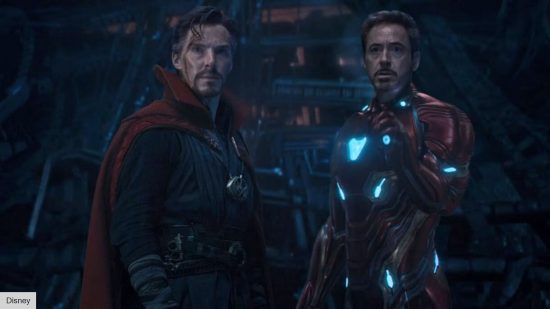
It’s something that Thomas commends with his inclusion in this collection of the 2006 series Doctor Strange: The Oath, from writer Brian K Vaughan and artist Marcos Martin. Thomas explains how this series “showed us a Stephen Strange in crisis,” having to contend with his burden as a superhero while being unable to shake his responsibilities as a surgeon.
Just as in the Sam Raimi Spider-Man movies, there’s something so engrossing about seeing a hero having to choose between the life they have been given and the life they want. With great power comes great responsibility and all that, but what if the hero doesn’t want those powers?
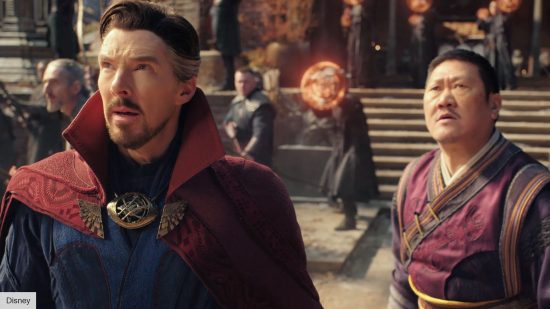
This notion is certainly something the MCU has put to good use – perhaps too much now as we approach Phase 5 – but there’s no denying that when done right, this thematic dilemma is super effective, be it on the big screen or the small panels of a comic book.
The sense of sacrifice is something that is explored in great detail for Stephen Strange as we visit different universes in Multiverse of Madness, and see how the character longs for a happy life with Christine Palmer. The 2022 movie might have had its fair share of issues, but it sure does remind us that this time-travelling, dimension-bending hero is still a human deep down.

Ultimately, it has always been too easy to dismiss Doctor Strange as an overly-theatrical and uptight magician, but the MCU has brought the character to the fore of its roster of heroes. Similarly, Thomas’ collection of Strange tales proves the character has always been an intriguing part of the Marvel world. As Thomas says: “A world without Doctor Strange in it… might just be more than mortal mind was meant to bear.”
You can pick up the Folio Society edition of Marvel’s Doctor Strange, selected and introduced by Roy Thomas, here. For more from Marvel, dive into our guides to new movies from the MCU, like the Guardians of the Galaxy Vol. 3 release date or speculate on the chances of a Doctor Strange 3 release date.
